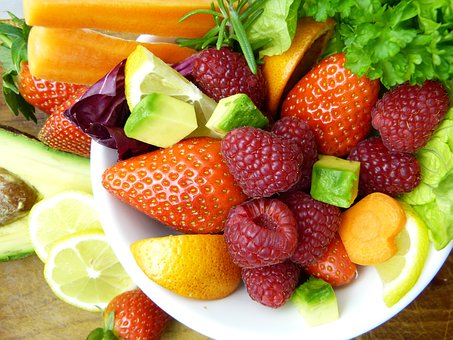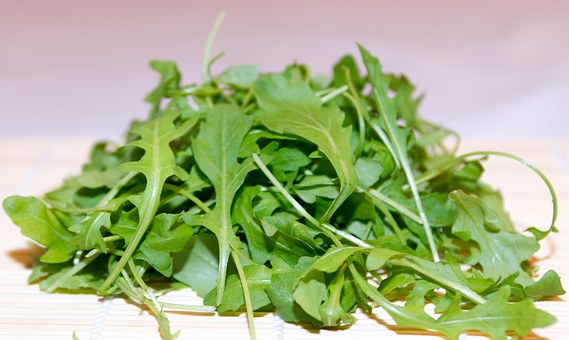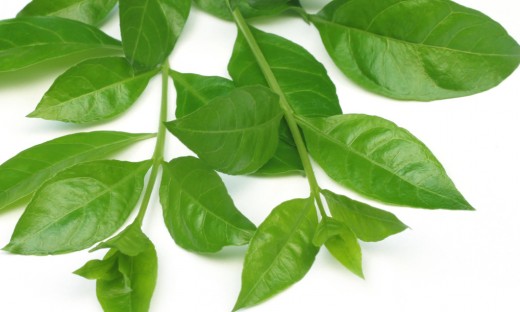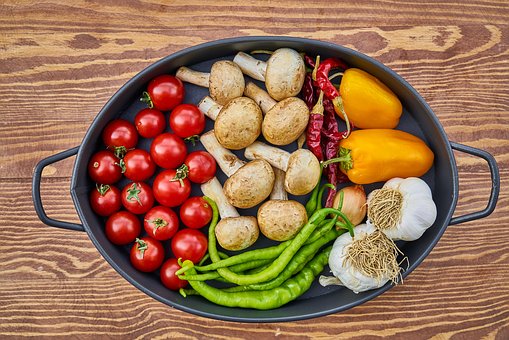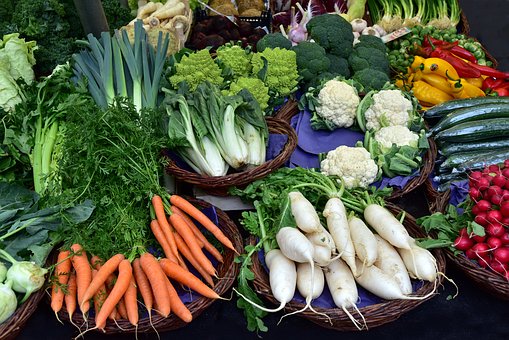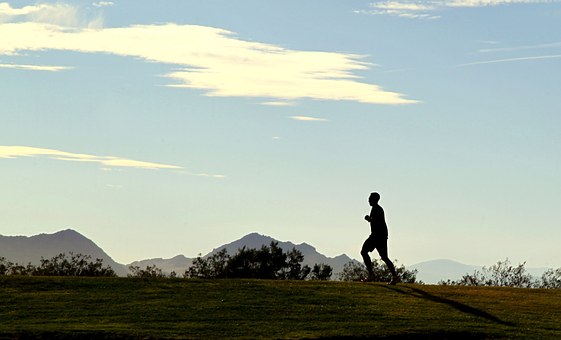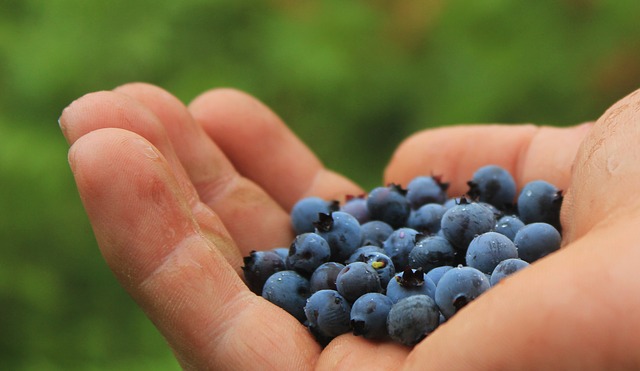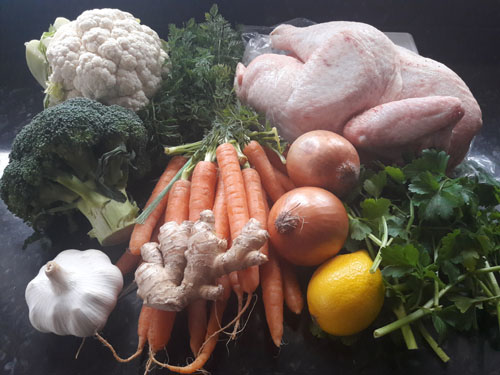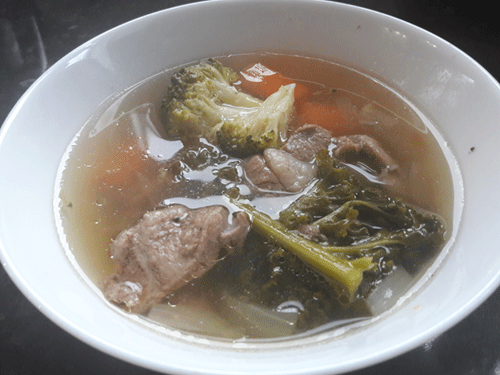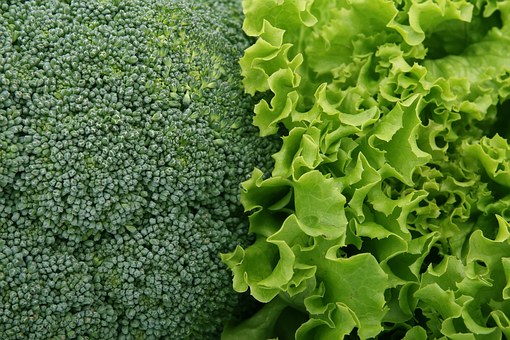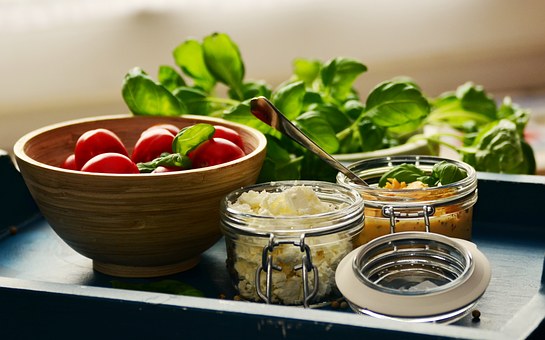Drink It Raw: Great Article On Unprocessed Milk
© HealthyMuslim. See Terms and Conditions
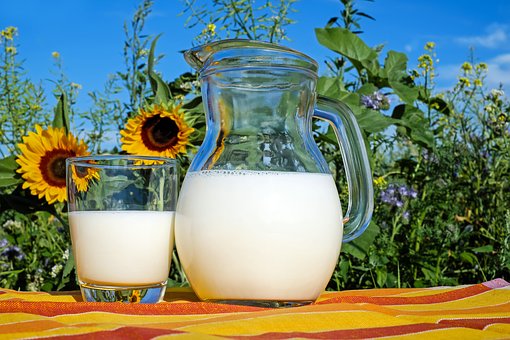
Drink it raw: Why is unprocessed milk the only illegal food in North Carolina?
I showed up at the farm in the dark of night. This was not a necessary element to procuring my illicit elixir, but it somehow seemed apropos. A lone light and the moon illuminated the gravel drive between my car and the barn in rural Alamance County. A black cat scurried across my path, and I mused at the irony.
Just as promised, I found the milk in the fridge. "Nelson" was printed neatly on the glass with indelible ink on an otherwise unlabeled jar. No one was around except for a dog, who surveyed my intentions and went back to guarding the cows. I left the money on the counter and departed with my contraband.
This was actually the least secretive element in my quest to find raw milk. Getting here had required everything short of a secret handshake.
After delicately putting the word out that I was looking, I was interviewed by a local gatekeeper who gave me the name of someone else who would send me in the right direction. In order to get that far, I had to prove my bona fides. The gatekeeper wanted to know my experience with raw milk, an attempt to ascertain whether I was a state health official operating a sting. Most newcomers are referred by friends as a way to keep the farmers in a circle of trust. Many are turned away. My words alone must have been persuasive, and I soon received a message directing me to the next gatekeeper, who in turn provided the name of a local producer.
The first time I called the farm I got a recording. A week went by, no call back. Had I blown it with my to-the-point message? The next time I phoned, a young boy answered. I told him the name of the person who sent me and why I was calling. He told me the farm didn't sell milk. Then he hung up.
What I was after isn't technically illegal. Although it's against the law to sell unpasteurized milk for human consumption in the state, it's perfectly legit for a farmer to sell such milk for "animal consumption only," also known as "pet milk."
But I'm part of a rapidly growing underground in North Carolina and across the country, because few people actually buy it for their pets. Far more commonly, its devotees are people who have allergies, eczema, autoimmune diseases, cancer, difficulty digesting processed milk, and parents who say it has helped their children overcome behavioral and health issues. And included among that bunch are those who think simply that it's the only milk worth drinking. They call it "real milk." In their eyes, the stuff on the grocery store shelves might as well be called a "milk-flavored beverage," the way Cheez Whiz is a "processed cheese food."
The legal limbo derives from the presumption that people are drinking the pet milk. The farmers know it, and most operate on a "don't ask, don't tell" policy.
The state regulatory bodies also know it. Yet because drinking unadulterated milk is completely legal, they are relegated to going after those selling it - a dicey proposition, because those farms are also peddling it within the letter, if not the spirit, of the law. At this point, the state essentially has found itself policing winks and nods.
When and how did the sale of one of nature's most perfect foods become a crime? And why is it legal to sell uncooked meat, raw seafood, alcohol, tobacco and firearms - but unprocessed milk is more difficult to obtain than marijuana?
There is a Latin phrase perennially useful in unraveling great mysteries: Cui bono? Who benefits? The dairy industry in the United States is a $40 billion-a-year business, not including federal subsidies, which themselves run in the billions. Farmers step outside of this rigid system at their peril. In 2003, a maverick dairyman in California tried to sell milk at 20 cents less a gallon than his competition by snubbing the public-private consortium that has controlled milk production for 70 years. His brazen move was squashed by an act of Congress.
Milk is big business. And pasteurization is a necessary element to dairy consolidation, as it permits milk to be stored and transported over long periods and distances.
In this environment, 20th-century fear becomes a powerful agent in 21st-century greed. Many of the farmers I spoke to for this article reminded me that whomever controls the food supply controls the people, and that scholars going back to Aristotle understood food as the first medicine. Instead of protecting our freedom to procure whatever food we deem necessary to achieve robust health, federal and state governments, with precious few exceptions, have lined up to make raw milk illegal.
The disconnect is startling. Federal and state health officials warn that consuming raw milk can kill you, and considerable government heft is thrown behind efforts to keep it out of reach. And yet countless people go to great lengths to find it, and report feeling more alive after drinking it, even claiming that unprocessed milk has cured chronic illnesses like asthma and irritable bowel syndrome that pharmaceuticals didn't touch.
Cui bono?
To discourage human consumption of unpasteurized milk, the N.C. Department of Agriculture recently proposed requiring that all pet milk sold in the state be colored with charcoal dye. The agriculture board was set to vote on the proposal last month but put off the decision until they could determine whether the dye would compromise the organic certification of those farmers who use the milk as animal feed.
"The concern was that we had reports that some people were selling raw milk that was supposedly being sold as pet food, but in fact both parties to the transaction knew it was going to be used for human consumption. And this was just a way of discouraging that," says Assistant Commissioner of Agriculture David McLeod.
To the N.C. Department of health, this is a life and death issue.
"Raw milk - milk that has not been pasteurized - contains harmful bacteria that may cause illness and possible death," says state epidemiologist Dr. Jeff Engel.
The department is currently investigating the circumstances surrounding a dozen people in Wilkes County who recently became ill with Campylobacter, one of the most common bacterial causes of diarrhea, after drinking raw milk from the same farm. Samples of the milk came up negative for the bacterium, although Engel said that does not discount raw milk as his team's "leading theory" for the recent spate of illnesses.
Raw milk advocate Ruth Ann Foster of Guilford County has been following the investigation closely and believes that the health department's stated agenda against raw milk is causing the investigators to overlook more likely causes, including reports issued by Engel's own office of widespread viral gastroenteritis (the so-called stomach flu) causing similar symptoms. Foster points out that state investigators have only asked people who were recently sick and who also drank raw milk to come forward, which she says is a blatantly unscientific way of finding data.
Engel responded that if his office asked everyone who recently experienced gastrointestinal illness to come forward, they'd "be overwhelmed, because that's a common illness."
Foster says that proves her point. According to the U.S. Food and Drug Administration, most Campylobacter infections are "sporadic and not associated with an outbreak." The bacteria are commonly found in the intestinal tracks of humans and animals with no sign of illness. A recent two-year Minnesota Department of health study found that 88 percent of poultry sampled from local supermarkets tested positive for Campylobacter.
Nonetheless, Engel says raw milk is the "common thread" among those who have come forward.
Foster calls it the most "far-fetched, grasping-at-straws nonsense" that she's ever heard.
This chasm is common in the quiet battles raging all over the country regarding individuals' rights to procure raw milk. It's an issue that cuts to the core of health freedom. Raw milk stands alone as the only food that has ever been outlawed, and its advocates point out that it took a constitutional amendment to ban alcohol.
Although the FDA and the Centers for disease Control and Prevention both avidly warn of raw milk's dangers, its demand is growing rapidly. Raw milk is available at retail stores in eight states and legally sold at the farm gate in a couple dozen more. Until three years ago, North Carolina allowed contractual agreements through which consumers could purchase a share in a cow or goat, pay the farmer the agricultural equivalent of room and board - much in the way people pay stables to care for their horses - and then have a legal right to the animal's milk, or a fraction thereof. Cow shares were banned in 2004 with a line slipped into unrelated legislation without a hearing.
It is that legal arrangement that raw milk advocates in the state are trying to reinstate. Sen. Kay Hagan (D-Guilford) introduced a bill this session that would repeal the ban.
"I have been amazed at the number of people I have met who want to drink milk that comes from a cow that has been raised not in confinement, grazed on grass, no hormones or antibiotics," Hagan says, adding, "back to what God and nature intended."
She admits that the first time Foster, her constituent, approached her about the issue of raw milk, she thought to herself, "What is she talking about?
"I think we all come to the table with preconceived notions that pasteurized milk is the only way to go," Hagan says. "You really have to understand the history of it to understand where we are today."
Hagan's bill passed the Senate last month by a vote of 39-9, and is now awaiting approval in the House. Foster was the only expert witness to testify for the bill in committee, while at least a dozen industry representatives and state and federal health officials showed up to speak against it, including scientists and lobbyists sent down from Washington, D.C.
But in many ways, Foster and public health authorities are talking about two different foods. The raw milk that its advocates want to get back to isn't the industrialized product of the early 20th century, but milk that harks back to a much simpler time, when many Americans raised their own dairy animals or knew someone who did. The milk was local and consumed fresh. (See "Pasteurization: An escape from The Jungle" below.)
Most importantly, the cows were raised in pastures. Cows are ruminants (as are sheep and goats) and thrive on grasses. Nonetheless, 90 percent of dairy cows in the United States live their entire lives in sheds with cement floors, never once feeding on pasture. They are fed corn, soy and processed food wastes instead, and the result is a dramatically shorter lifespan and milk that has a far different nutritional and biological composition.
Cows raised on pasture typically live through eight to 10 lactations, usually about 10 to 12 and even as long as 15 years. Feedlot cattle produce an average of 1.8 lactations and are usually hamburger before they are 4 years old. By that time, they can no longer produce milk, or their ankles give out under their own weight. About 25 percent of meat sold is from such "downer" animals. The cows are routinely given steady doses of antibiotics because they are not healthy enough to fight infection on their own, and many are injected with hormones to increase their production.
Ronnie Cooper, a dairy farmer with about 35 cows north of Boone, says he just doesn't understand it. "They run through their cows. They have got them in confined barns, on concrete. They have a lot of trouble with the cows going lame. One or two lactations and they have to sell them. Ours will go for years and years," he says.
The deadly strain of E.coli that is often cited as a reason to pasteurize milk is itself a product of feedlot cattle. The 0157:H7 strain had never been seen before 1980. Ruminants eating a diet of grass have a neutral stomach pH, and any microbes that reside there are highly susceptible to the more acidic environments of human digestive tracts and quickly die. But cows that eat corn have much more acidic stomachs, and thus the bacteria have evolved to thrive in acidic environments, eliminating our natural defense.
It's not just E.coli, either. Dutch researchers have found much lower rates of Salmonella in dairy herds with access to pasture.
For many raw milk drinkers, milk is not merely a commodity, but the ultimate manifestation of nature's delicate balance.
"I don't think you can get good milk from unhappy, sick animals. It's a process that really comes full circle," says Evin Evans, who runs Split Creek Farm in Anderson, S.C. Split Creek is home to 400 dairy goats, and the milk is sold under the state's Grade A Raw license.
In South Carolina, state regulators allow milk slated to be pasteurized to contain bacterial counts of up to 100,000 bacteria per milliliter. Milk sold under the Grade A Raw license must stay under 30,000 bacteria per milliliter.
Mike Senkpiel, of Durham, who feeds raw milk to his 5-year-old daughter, reckons that drinking pasteurized milk is basically consuming billions of dead bacteria.
Among the two dozen people interviewed for this article, not one said they would drink raw milk from a conventional dairy.
In fact, a 2000 Listeria outbreak in Winston-Salem that health authorities frequently cite as an example of the dangers of raw milk likely involved milk that was supposed to be pasteurized. Five stillbirths, three premature deaths and two infected newborns were attributed to fresh Mexican-style cheese made from raw milk. The two cheese makers told the CDC that they had purchased the milk from a manufacturing-grade dairy in Forsyth County. (However, one individual who had been sick had not eaten the cheese, and the majority of the group had also eaten hot dogs during a period when 900,000 pounds of hot dogs had been recalled due to Listeria contamination.)
Raw milk proponents will tell you they don't think it's impossible to get sick from drinking unpasteurized milk, just that it's unlikely, especially vis-à-vis other foods. According to data by the U.S. Department of Agriculture, on a per serving basis, an individual is 10 times more likely to contract Listeria from consuming deli meats than raw milk. And overall, dairy (pasteurized or not) distantly trails produce, poultry and meat products in causing food-borne illness, according to the CDC.
Perhaps more importantly, raw milk consumers have a near universal mantra: Know thy source. "Because it's interactive between customer and farmer, it's tighter than any regulation would be," says a North Carolina farmer who moved to Virginia after cow shares were banned. He asked not to be named for fear of undue attention.
Implicit in the definition of raw milk is the absence of another modification ubiquitous in its processed cousin: homogenization, the system of breaking down the fat globules so they no longer separate from the other components. The only tangible benefit to consumers from homogenized milk is not having to shake the container, although there is evidence that the extrusion process denatures the nutrients and makes them far more difficult to digest.
Milk processors, on the other hand, benefit tremendously from homogenization because it allows them to skim some of the highly profitable cream off the top, sell it separately for ice cream and butter, and then reconstitute the milk sold on the shelves with milk powder in an attempt to restore its original texture. Even "whole milk" is processed in this way.
Dwayne Haus, a Triangle-area naturopath who recommends raw milk to his patients, says real milk is a living food. "As soon as you pasteurize it, as soon as you homogenize it, you have a dead product," Haus explains.
Worse, sometimes the bacteria are not completely killed in the pasteurization process or the milk is contaminated afterward, both of which can be disastrous. The largest milk contamination in the country involved improperly pasteurized milk, sickening 5,000 people in 1985. There have been thousands of cases of illness (including dozens of deaths) attributed to milk that had been pasteurized. Yet the FDA and CDC's dire warnings about drinking raw milk never mention them.
Some studies have shown that milk may have its own defenses from contamination, defenses destroyed by heat. A 1982 study in Applied and Environmental Microbiology showed that Campylobacter cultures inserted in milk died much more quickly and completely in raw milk than in milk that had been pasteurized. Subsequent studies showed similar antimicrobial properties in raw milk.
Referring to pasteurized milk, the Virginia farmer says, "A good place to grow bacteria is basically what it is."
Milk in its raw state has more than a dozen components that protect it from contamination and aid digestion. There is a growing consensus in the medical community that our bodies and particularly our intestinal tracts cannot function optimally without a healthy balance of symbiotic bacteria that help us digest our food and perform other vital functions. Beneficial bacteria are naturally present in milk but are destroyed by pasteurization and homogenization.
Engel, the state epidemiologist, says there is absolutely "no evidence" that raw milk is healthier than processed milk.
But studies published as recently as last month and going back to the late 19th century suggest otherwise.
A 2006 paper in the Journal of allergy and Clinical Immunology showed that childhood consumption of raw milk resulted in significant reductions in the development of asthma, eczema and hay fever. Blood analysis of study participants revealed that children who drank raw milk had 50 percent lower histamine levels than controls. A previous study in the prestigious British medical journal The Lancet in 1999 showed similar results.
Just last month, a study of nearly 15,000 European children published in Clinical & Experimental allergy found a statistically significant inverse relationship between consumption of "farm milk" and asthma and allergies.
Scientific testimonies to the health benefits of raw milk are hardly new, and much of the research on this subject was conducted decades ago. A 1937 study published in The Lancet revealed that children who drank raw milk were less likely to develop cavities than children given pasteurized milk, and they also had higher resistance to tuberculosis.
An even earlier study in the American Journal of Diseases of children in 1917 revealed that raw milk prevented scurvy and protected against flu, diphtheria and pneumonia (all illnesses for which American children are now routinely vaccinated).
Despite this research, the FDA and CDC's latest joint release states bluntly: "Consuming raw milk may be harmful to health." The statement goes on to assert that there is "no meaningful nutritional difference between pasteurized and raw milk, and raw milk does not contain compounds that will kill harmful bacteria."
The North Carolinians I met who regularly drink raw milk regard the FDA's analysis with a mixture of indifference and derision. For Jane Ezzard, a Durham nurse who no longer has to be hospitalized annually because of her allergies, the personal experience of newfound health outweigh government-sanctioned fear.
What unites raw milk drinkers is their incredulity at the state telling them what foods they can and cannot purchase.
Dr. Clark Wang, a Duke-trained psychiatrist, calls his illegal purchases through a "clandestine, black-market milk co-op" an act of "civil disobedience." Some of Wang's passion may be attributable to his diagnosis with a type of lymphoma for which Western medicine has little answers and no cure. He calls the yogurt that Ezzard, his partner, makes for him with raw milk the "foundation of my anti-cancer program."
Wang says he was "radically transformed" by his research into and personal journey with raw milk, "as a man, as a physician, as a healer." pasteurization laws, he says, are nothing more than a "government systematic program campaign to support industrial dairy."
"Pasteurization," Wang says, "doesn't improve the safety or health of dairy."
This deep suspicion of industry motives and their perceived patrons in government at all levels is a common thread.
Sally Fallon, president of the Weston A. Price Foundation, a national nonprofit dedicated to preserving dietary traditions, points out that four corporations control 80 percent of the milk in the United States.
"Milk is no longer a local product. North Carolina is a net milk importer, and it used to be a dairy state. Pasteurization is the thing that has allowed this industry to consolidate," Fallon says, adding, "The laws about pasteurization are for economic reasons. The health argument is based on 40-year-old science that would not hold up in court."
Fallon and others point out that large dairies and the surrounding industries that process the milk have everything to lose from milk transactions occurring directly between consumer and farmer, while the farmers I spoke to said such transactions are vital to their ability to exist. Cooper, the farmer near Boone, says at age 57, farming "is pretty much all I've ever done."
Sen. Hagan speaks of farmers like Cooper often when talking about her cow-share bill, titled "Small Dairy Sustainability."
"Our studies show there were 5,000 dairies [in the state] in 1970, and now we're down to 340. Those numbers are dwindling every year," she says. "If you look at the history of North Carolina, we were primarily an agrarian society. There is a huge concern that we have green space and open space and small farms." The way you preserve that quality of life, she says, is supporting small farmers' ability to make a living.
The difference in the economics of a conventional dairy farm that sells its milk to distributors and a pasture-based dairy with direct sales (or cow shares) is considerable. Conventional farmers are receiving about $1 per gallon, the lowest price in 25 years. In 2002, dairy farms went out of business at a rate of 16 per day, according to the Weston A. Price Foundation. Raw milk is fetching between $5 and upward of $15 a gallon.
The Carolina/Virginia Dairy Products Association, which represents milk processors, has hired a lobbyist to oppose Hagan's bill. Glenn Jernigan - who has also represented biotech giant Monsanto - is helping the association "get the message out to legislators about our concerns," in the words of Managing Director Stevie Hughes.
Hughes maintains the association's opposition is entirely centered on public health. She adamantly denies any economic motivation. "Our concern is the product that is ultimately sold is going to be safe," Hughes says.
But Hagan's bill would not put raw milk on grocery store shelves. It would simply re-legalize boarding agreements for dairy animals, allowing people without access to farmland to drink milk from their own cows.
"I find it very difficult to understand how cow shares, which is a contractual agreement, a boarding arrangement, cannot be permitted when other contractual agreements are acceptable," says a Piedmont dairy farmer who is in the process of moving her cows out of North Carolina because of the state's hostility to raw milk. "I find that discriminatory."
The state agriculture and health departments both oppose Hagan's bill. Local health departments also have joined the fray. The Wilkes County health Department sent out an "Alert!!!" to area doctors and hospitals linking the recent Campylobacter outbreak to unpasteurized milk. The release also encouraged healthcare practitioners to contact Sen. Steve Goss, a Democrat who represents the area west of Winston-Salem, to "ask him to reconsider sponsorship" of Hagan's bill because of "the health risks associated with raw milk consumption." He withdrew as a cosponsor and voted against the bill.
Engel, the state epidemiologist, says if residents want raw milk badly enough, they can go to South Carolina or get a cow, dairy shares excluded.
"We relax the pasteurization laws, and I'll be counting illness and death. It's hard to deny that," Engel says. Asked for the illness and death statistics from states where raw milk is legal, he responded, "I can't tell you that off the top of my head."
Ultimately what divides Engel and raw milk proponents is a different understanding of who is ultimately responsible for their health. The raw milk drinkers and farmers interviewed for this article don't expect the state to protect them from every microbe, nor do they think such efforts are possible or even desirable.
"I think the ultimate responsibility for my health and your health and everybody else's is our own. I don't think we're conscious enough about having ownership of that," says Evans, the South Carolina goat farmer.
Alice Hall, a Durham volunteer who organizes the North Carolina Natural milk Campaign (www.ncrawmilk.org), says the issue is even more fundamental to her. "It's about freedom of speech and freedom of choice."
Pasteurization: An escape from The Jungle
The unfiltered history of pasteurization - as opposed to the sanitized version glorifying its pioneer, Louis Pasteur - recently has come under intensified scrutiny as the Internet has given activists the ability to search 100-year-old medical journals, long-forgotten media accounts and a larger context in which to understand the public policy shift toward pasteurized dairy.
What led up to widespread pasteurization reads like a page out of Upton Sinclair's The Jungle at the turn of the 20th century. Indeed, the filth and corruption that Sinclair exposed in the meat business was mirrored in the increasingly industrialized dairy industry. Cows were confined to manure-laden stalls and fed the byproducts of an increasingly industrialized economy. Milk was diluted with sewage-tainted water. Chalk, plaster, white clay and even animal brains were added to cover up for the absence of cream, which had been skimmed and sold separately. There was little sanitation or refrigeration.
This was not the milk of our ancestors, who drank the stuff straight from the cow (or goat or ewe). This product was quite different, and in many cases quite dirty. Sometimes it wasn't even milk.
Pasteurization was viewed by many as a short-term solution until the industry could be cleaned up. Although pasteurization found a deep-pocketed advocate in Nathan Straus, the co-owner of Macy's who had lost a son to contaminated milk, many physicians in the early 1900s recognized that heating milk destroyed vital nutrients and enzymes. In fact, Dr. J.E. Crewe, founder of the Mayo Clinic, prescribed raw milk to his patients and claimed it cured a number of diseases.
As a result of this continued demand, an Essex County, N.J., doctor created the Medical milk Commission in 1893 to certify clean raw milk from cows free to roam and eat a species-appropriate diet of grass. Comprised of 42 physicians, the Medical milk Commission became a model for other cities and counties, and milk commissions popped up all over the country. The legacy of that movement is still realized today in the regulations that govern the licensing of raw milk for retail sale in California, Maine, Connecticut and New Mexico.
For a number of years, milk proceeded along parallel tracks. By 1936, half of the milk sold in the United States was pasteurized and half was raw. As the Second World War drew to a close, a campaign to educate Americans about raw milk's dangers took shape in national magazines, led by The Ladies' Home Journal. Many of the tales of death and disease attributed to raw dairy later proved fictional, but the clamor for mandatory pasteurization laws proceeded unabated. Michigan became the first state to outlaw raw milk in 1948. One by one, states began adopting the federal Standard milk Ordinance (now called the Grade A pasteurized milk Ordinance, issued by the FDA).
But by then the idea that milk was inherently dangerous and that a guy named Pasteur saved humanity was well ensconced, and banning raw milk became scarcely necessary. Industrial dairy had been born.
The original article can be read here: Drink it raw, and you will be able to read a very lengthy comments section where there are some interesting discussions.
Source: IndyWeek.Com
Link to this article: Show: HTML Link • Full Link • Short Link
Share or Bookmark this page: You will need to have an account with the selected service in order to post links or bookmark this page.





|
Related Articles:
- Are You Drinking Living Milk Or Dead Milk?
- Drink It Raw: Great Article On Unprocessed Milk
- Untreated Raw Milk Gains in Popularity and Demand
- Frequently Asked Questions on Raw Untreated Milk
- How To Make Almond Milk
You must be registered and logged in to comment.
Most Popular
Latest Articles
Popular Subjects
Health, fitness and longevity
Based upon the principles of health
in the Qur'an and Prophetic Traditions.
HealthyMuslim.Com
There are two bounties in which
most people lose out: good health
and free time. Al-Bukhari.





